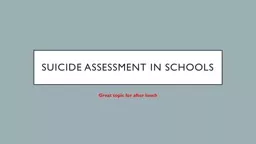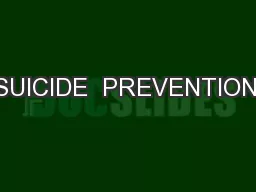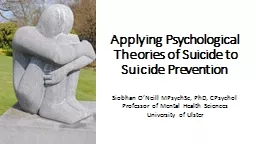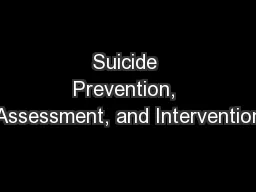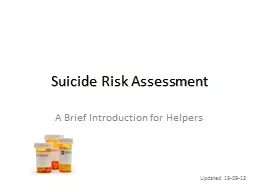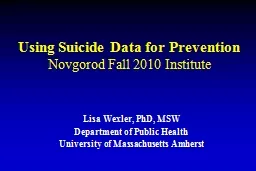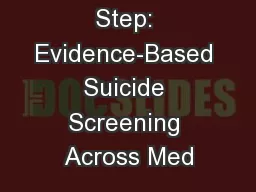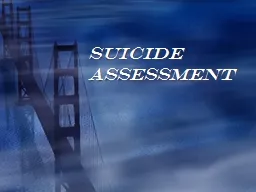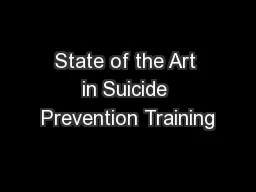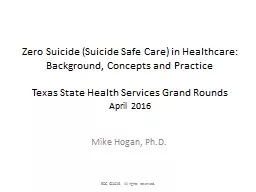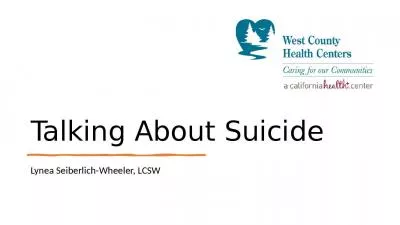PPT-Suicide Assessment
Author : alexa-scheidler | Published Date : 2020-01-13
Suicide Assessment in S chools Great topic for after lunch Who are you DON T ACT LIKE YOU DON T WANT AN ICEBREAKER TURN AND TALK TO YOUR TABLE MATES Where do you
Presentation Embed Code
Download Presentation
Download Presentation The PPT/PDF document "Suicide Assessment" is the property of its rightful owner. Permission is granted to download and print the materials on this website for personal, non-commercial use only, and to display it on your personal computer provided you do not modify the materials and that you retain all copyright notices contained in the materials. By downloading content from our website, you accept the terms of this agreement.
Suicide Assessment: Transcript
Download Rules Of Document
"Suicide Assessment"The content belongs to its owner. You may download and print it for personal use, without modification, and keep all copyright notices. By downloading, you agree to these terms.
Related Documents

